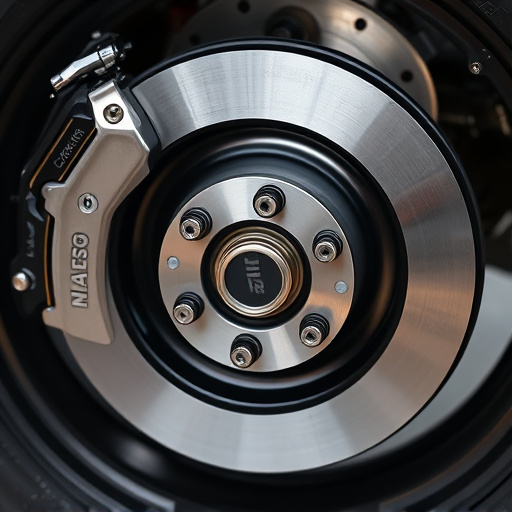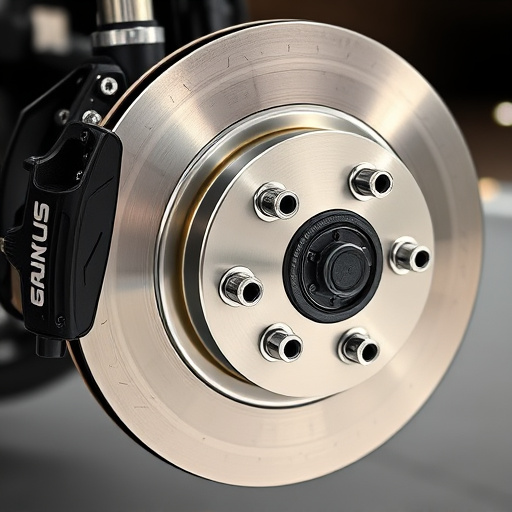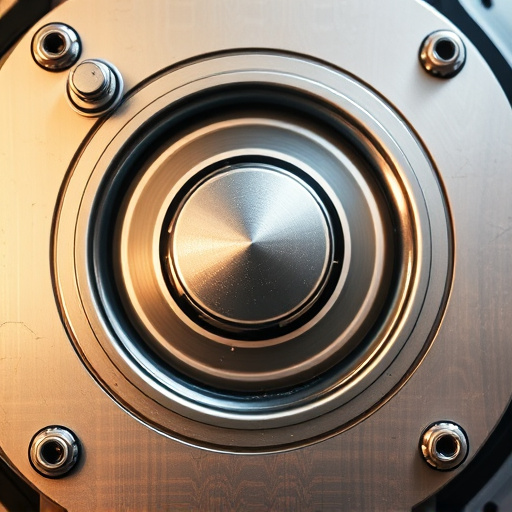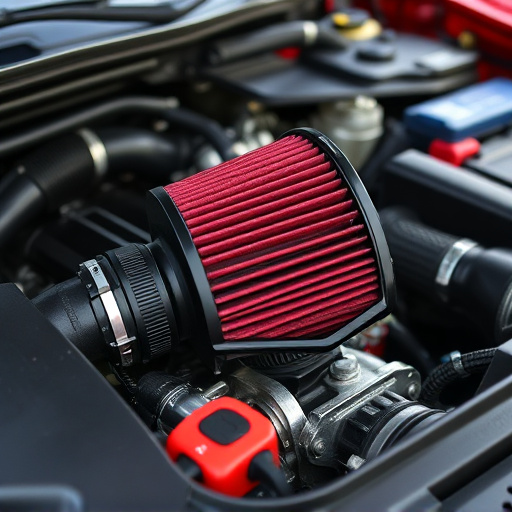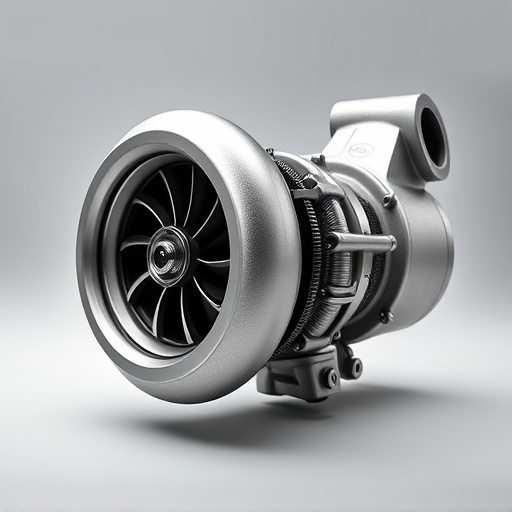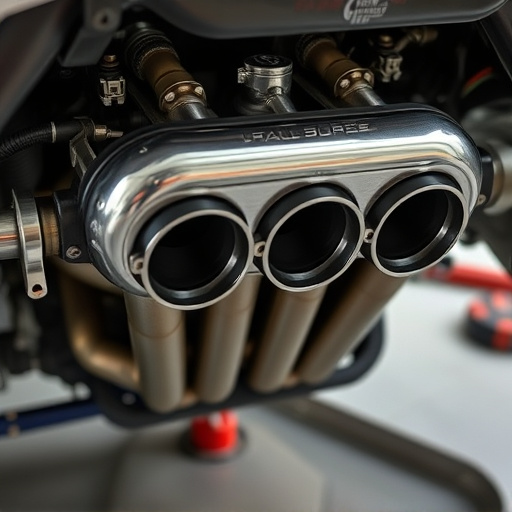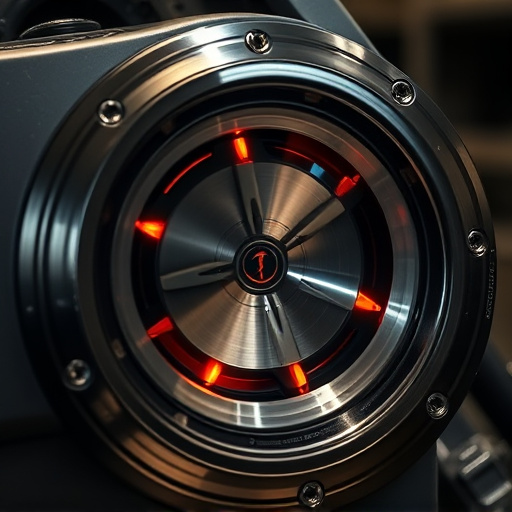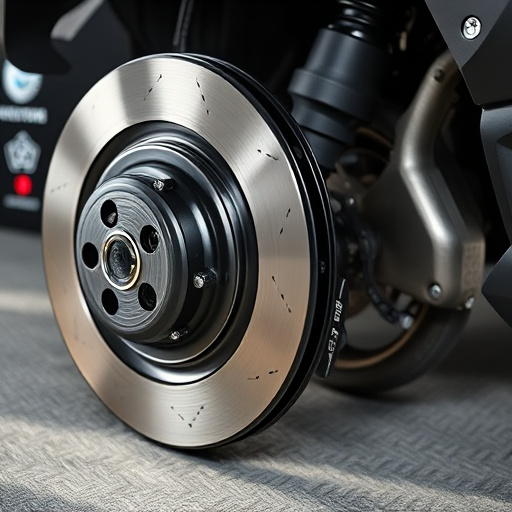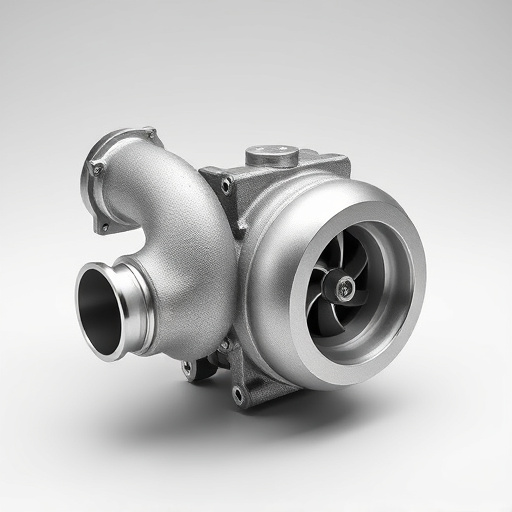Brake Pads and Rotors are critical for vehicle safety, slowing and stopping wheels through friction. Over time, heat from this interaction degrades pads and rotors, leading to brake fade. High-quality brake pads and rotors with advanced metallurgies and heat dissipation technologies resist fade better. Regular maintenance, including component replacement and rotor inspection, preserves the braking system's integrity and effectiveness. Choosing components designed for superior heat tolerance ensures better performance, reducing wear and maintaining consistent braking under heavy use or extreme conditions, thereby enhancing vehicle safety and handling.
Brake fade is a common concern, especially during prolonged or heavy braking. This phenomenon occurs due to the gradual reduction in braking power as heat builds up within the brake system. In this article, we explore how brake pads and rotors play a pivotal role in combating brake fade resistance. By understanding the fundamentals of brake operation and the impact of material composition, we’ll guide you through selecting the ideal brake pads and rotors to ensure optimal braking performance and safety.
- Understanding Brake Fade: The Basics of How Brakes Work
- The Role of Brake Pads and Rotors in Preventing Fade
- Choosing the Right Brake Components for Improved Resistance
Understanding Brake Fade: The Basics of How Brakes Work
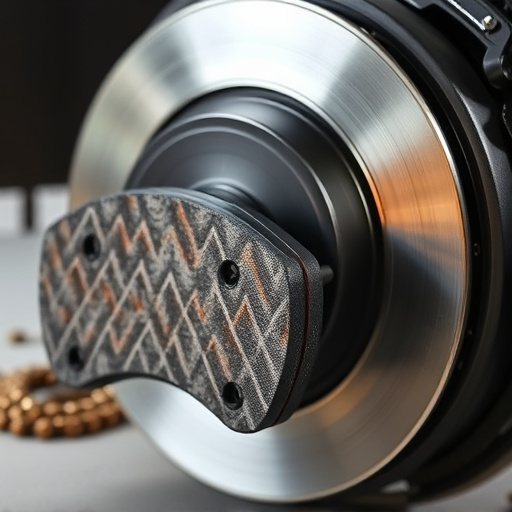
Brakes are one of the most critical safety features in any vehicle. Understanding how they work is essential to grasp the concept of brake fade resistance. When you press the brake pedal, hydraulic pressure activates brake pads that press against spinning brake rotors. This frictional force slows down and eventually stops the rotation of the wheels, enabling controlled deceleration.
The interaction between brake pads and rotors generates significant heat due to the high-pressure friction. Over time, this heat can cause the pads and rotors to degrade, leading to reduced braking efficiency, a phenomenon known as brake fade. High-quality brake pads and rotors are designed to withstand this heat better, ensuring consistent performance even under demanding conditions. Features like advanced metallurgies and heat dissipation technologies in pads and rotors significantly improve fade resistance. Additionally, proper maintenance, including regular replacement of intake components and timely inspection of brake rotors, plays a vital role in preserving the braking system’s integrity and effectiveness.
The Role of Brake Pads and Rotors in Preventing Fade
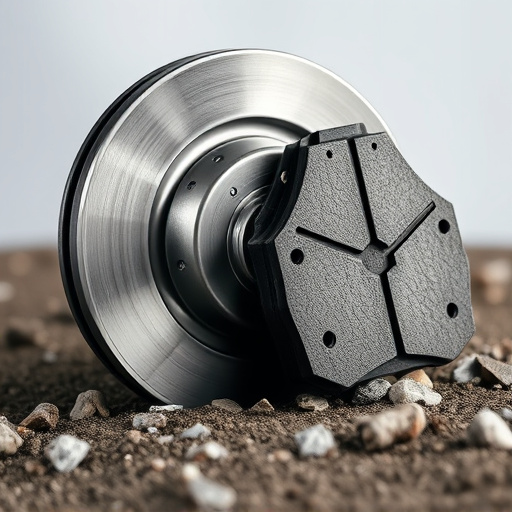
Brake pads and rotors play a pivotal role in preventing brake fade, ensuring optimal braking performance under extreme conditions. These components are at the forefront of translating driver intent into controlled deceleration. High-performance parts like effective brake pads and well-maintained rotors offer several advantages.
Brake pads, made from advanced materials, provide superior friction against rotating rotors, enabling efficient heat dissipation. This is crucial during spirited driving or heavy-load scenarios where excessive heat buildup can cause brakes to fade. Meanwhile, rotors, designed for durability and consistent performance, help maintain uniform braking force by reducing warping. The combination of robust brake pads and well-engineered rotors results in improved heat tolerance, ensuring drivers have precise control over their vehicles even after prolonged use or under demanding conditions—a factor often overlooked but vital for overall vehicle safety and handling, especially when considering the performance potential of modern cars equipped with powerful engines and aggressive exhaust tips.
Choosing the Right Brake Components for Improved Resistance
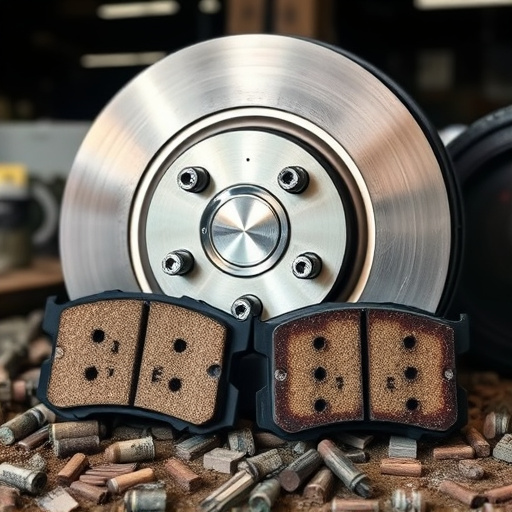
When it comes to enhancing brake fade resistance, selecting the appropriate brake pads and rotors is a strategic decision that can significantly impact your vehicle’s overall stopping power. The right brake components are crucial for maintaining consistent braking performance, especially under heavy use or extreme conditions. Opting for high-performance parts ensures better heat dissipation and reduced wear, allowing your brakes to remain effective even after prolonged or intense braking events.
Focus on choosing brake rotors designed for superior heat tolerance and strength. These components play a vital role in dampening the heat generated during braking, preventing rapid degradation of brake pads. Complementing these with top-quality brake pads that offer excellent friction and wear characteristics ensures a coordinated effort, enhancing overall fade resistance and providing drivers with enhanced control and safety.
Brake pads and rotors are integral components that significantly enhance a vehicle’s braking performance. By understanding how these parts work together, drivers can ensure optimal fade resistance, providing consistent and powerful stops, even under heavy braking conditions. Choosing the right pad and rotor materials, thicknesses, and designs is crucial for lasting performance, ensuring safety and peace of mind on the road.


